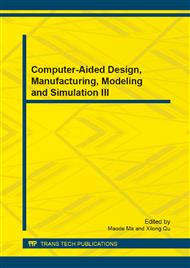p.322
p.329
p.333
p.337
p.342
p.349
p.354
p.359
p.363
Research on the Sensor Coarse Signal Processing Model Based on Adaptive Genetic Algorithm
Abstract:
With the rapid development of electronic information science and network transmission technology, the signal processing technology has been widely applied to various fields, which is the most important component of signal detection and transmission, and the key signal processing technology for processing sensor crude signals. Based on this, the experimental system of sensor coarse signal processing model is established, and in the experimental system, the transformer can carry out signal recognition for voltage and current, the use of PC microcontroller and embedded AD converter carries out analog / digital conversion for sensor crude signal. For the amplification process of sensor coarse signal, the use of adaptive genetic algorithm carries out mathematical modeling, the realization of the signal identification, acquisition and processing functions through software programming control. Finally, the intelligent processing of sensor coarse signal is successfully completed by the experiment system, and the signal processing effect is given as well.
Info:
Periodical:
Pages:
342-345
Citation:
Online since:
October 2013
Authors:
Price:
Сopyright:
© 2014 Trans Tech Publications Ltd. All Rights Reserved
Share:
Citation:


